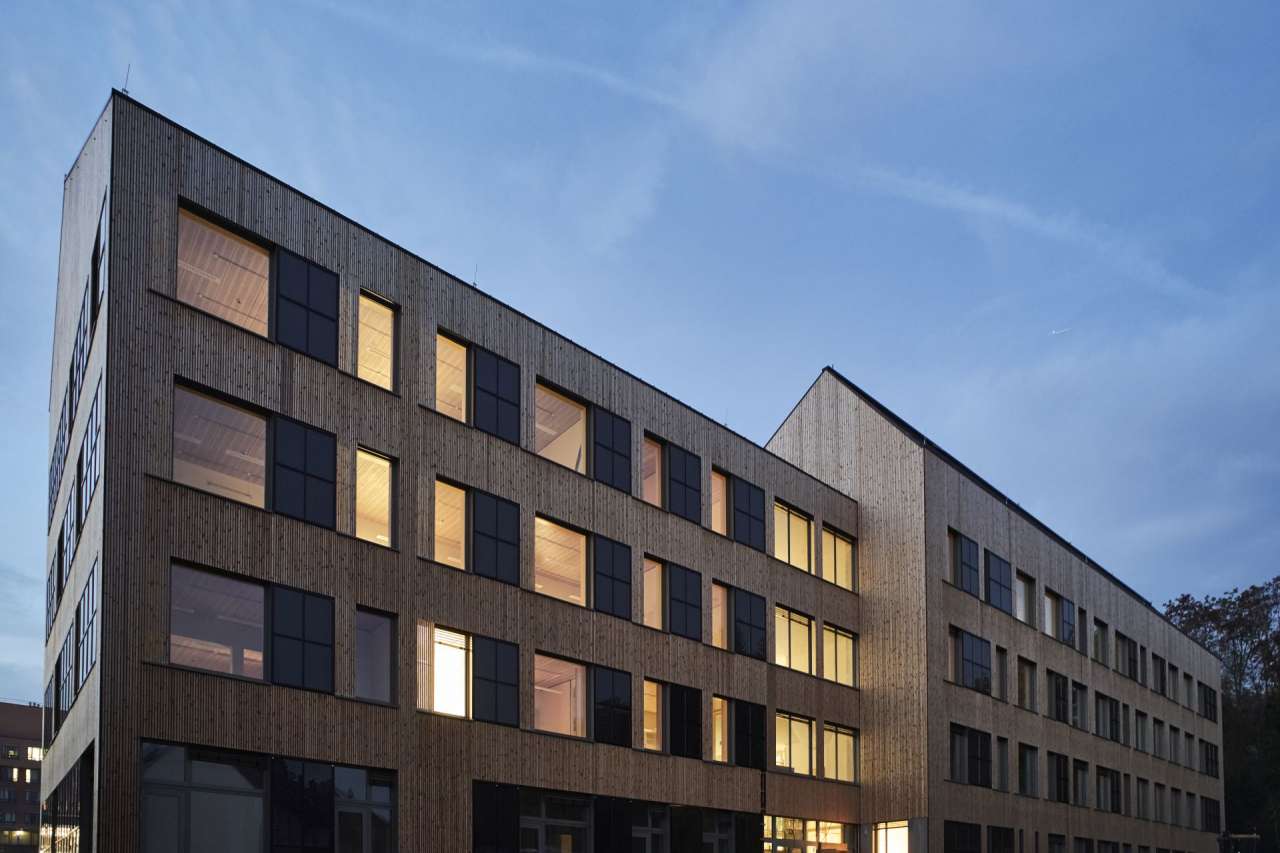The Technical-vocational College for Healthcare Professions (LTPS) in Ettelbrück, Luxembourg, has an ambitious objective: to produce more energy than it consumes, taking into account ’grey energy’ – the energy needed for its construction and demolition. The building has been in use since the start of the 2019 academic year. It was selected as a pilot project based on the innovative ‘energy-plus’ concept. An application is being made for the building to obtain the Swiss ‘Minergie-A-ECO’ environmental certification.
- 10 June 2020
This project serves as an exemplary model for other public and private projects in Luxembourg.
As the number of students increases each year, a new building was needed to house the LTPS. This new building was selected as a pilot project to implement the innovative ‘energy-plus’ concept, which means that it will produce more energy than it consumes over its life cycle, also taking into account the energy required for its construction and demolition.
Innovative ecological materials
According to data on the Luxembourg Public Works portal, the college covers an area of 8400 m2 and can accommodate 430 students in 16 classrooms and six clinical teaching rooms The academic complex also includes an administrative wing and a multi-purpose room.
With a view to minimising ’grey energy’ – the total energy consumed over the building’s entire life cycle – materials were chosen for their energy efficiency and low environmental impact. The building is made from wood, assembled using a system adapted for the project. The sloping roof has integrated solar panels.
Other technical solutions to increase the building’s energy efficiency and reduce its environmental impact include interior partitions made of clay panels, advanced thermal insulation and ventilation of the spaces using a hybrid system of fan coils. Finally, a thermal rainwater collecting system was installed on the façade and is connected to a reservoir.
Integration in a wooded environment
In addition to sustainability and energy efficiency, the building has optimised daylighting, acoustics and indoor climate. This resolutely innovative and ecological approach is reflected in the building’s architecture. Its façade is covered in wood, into which the solar panels are integrated. The building is perfectly integrated into the wooded surroundings.
‘People find it very pleasant to be in the building, particularly because of its thermal and acoustic comfort,’ explains Martine Schmitt, who has closely followed the project on behalf of the Luxembourg Public Buildings Administration.
Demanding certification and international recognition
The project was designed with the Swiss ‘Minergie-A-ECO’ certification in mind, which sets very high standards in the construction sector. This certification not only covers energy efficiency and comfort criteria, it also takes into account the use of environmentally friendly materials and prohibits the use of products that are harmful to health.
The building has enjoyed international acclaim. It has been awarded several European prizes and been selected for the ‘Mies van der Rohe Award’, which rewards excellence in European architecture.
Total investment and EU funding
Total investment for the project ‘Technical-vocational College for Healthcare Professions in Ettelbruck’ project was EUR 5 040 000, with the European Regional Development Fund contributing EUR 2 016 000 through the ’Luxembourg ERDF’ Operational Programme for the 2014–2020 programming period. The investment falls under the priority ‘Promoting a low carbon economy’.

